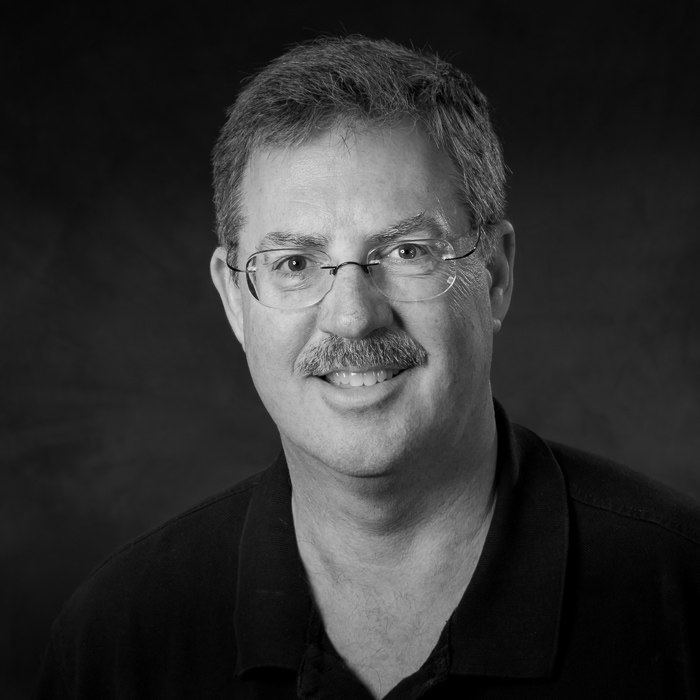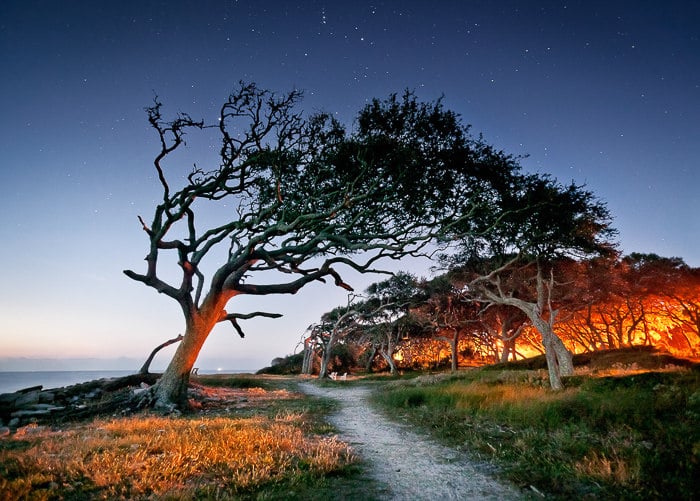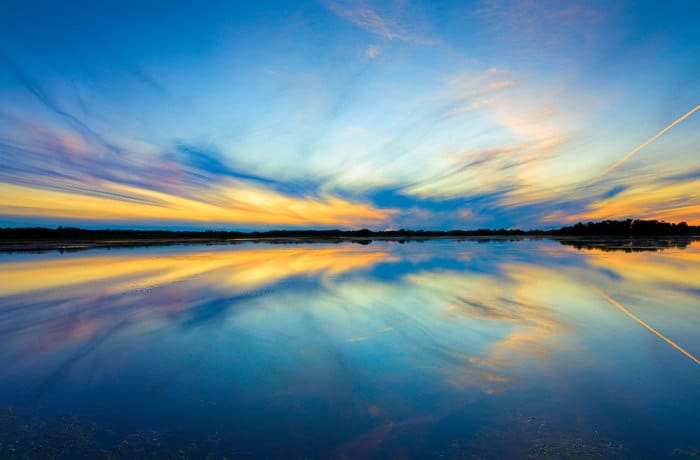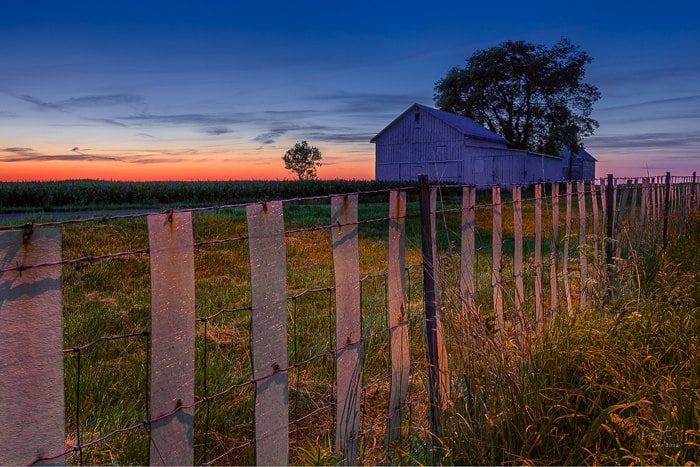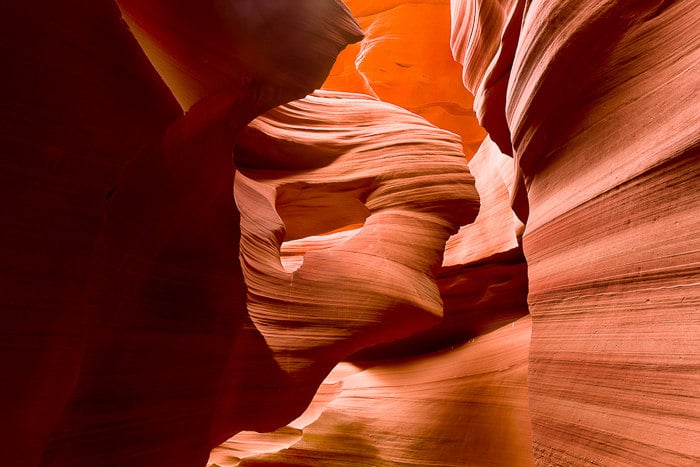If you’re a central Illinois creative and don’t know Craig Stocks, you should. The onetime engineer and lifelong photographer has been profiling Peorian artists, entertainers, chefs and the like for over two years on his outstanding personal blog, Playing Peoria. With a heightened sensitivity attuned to the places we work, Craig composes and captures environmental portraits of creators in their own element. NOW is thankful to spend 20 Minutes with Craig Stocks to talk about his worthy project, and much more.
Parker: With your blog Playing Peoria, you seem to display an abundance of passion for the arts. Your goal seems to be to sharing that shining enthusiasm with your community, helping others step out of what they already know.
Craig: I primarily consider myself a photographer, but I’m also a retired engineer. A little over a year ago I decided it would be a fun personal project to seek out artists and entertainers and do an environmental portrait of them. I was just going to do a small series for myself. But then I thought, “Well if I take the picture I should do something with it so I can put it online—why this person is special.” I was introduced to Suzette Boulais of Arts Partners, who was working on their marketing campaign for last year. They were in need of pictures of local artists and entertainers and I was in need of local artists and entertainers to take pictures of, so we said “Maybe we should work together!”
P: How did you fall into photography? Was it something you’ve always done?
C: It actually started back in high school. I had an uncle at the time who was a photographer at the Decatur Herald Review. That uncle inspired me to join the yearbook staff in junior high as a staff photographer, taking pictures for them. That was my first introduction to darkroom work and using a real, adjustable camera.
P: It sounds like what interested you most was the technology. You say on your site that you are “fascinated by the tools of creativity.”
C: I have to admit that I am probably as interested in the tools as the art. That period for the yearbook led me to working for the local newspaper in Morton my senior year. The yearbook advisor approached me and said, “Hey we’ve got a deal coming up—they’re expanding their co-op program. Would you be interested in getting out of school in the afternoons to go work as a photographer?” I said, “Sign me up!” And you got paid for it.
P: It sounds like this career has been chasing you a little bit.
C: Somewhat, because at the time I had no desire to be a photographer. After working as one for a few years, I guess it got in my blood. After I got married I moved from a job at the Pekin Times to Rembrandt Studio, where I realized that nobody really pays photographers good money. So when my wife Debbie graduated from nursing school, I took that opportunity to go to Bradley and switch directions entirely. I studied mechanical engineering and then worked at Caterpillar for thirty years. As digital came around in the nineties I started getting more and more back into photography. When I had quit in the seventies it had kind of become just a job. We were doing mostly senior portraits at Rembrandt Studio, and that was very assembly-line type of work. My idea at the time was that if it’s going to become just a job I might as well get a just a job that pays pretty well. As it turns out, there’s a lot of creative thought that goes into any kind of engineering problem solving.
P: Absolutely. It’s about having vision—being able to imagine something in three dimensions. Look around it. Look inside of it. Take it apart. That’s exactly what artists and sculptors do.
C: A lot of times I’m attracted to a tool, then I ask, “How can I use this tool to be creative?”
P: Why is technology important for artists? Why do they have to be scientists and engineers?
C: I don’t know if they all have to be, but for me it suits my style. I call it hyper-detail. I use a very high-resolution camera and different techniques to get, sometimes, incredible levels of detail. Sometimes even more detail than you can see on a six-foot-wide print. You could blow it up to twelve feet and still see more. For me, part of my style is using technology to get the absolute best technical results that I can get, while at the same have the creativity to create a WOW moment for whoever is viewing the photo. Ansel Adams said, “There’s nothing worse than a sharp photo of a fuzzy concept.” The photo itself also has to be interesting. For me, adding the technical part on top of that is just icing on the cake.
P: Do you think it’s becoming easier for photographers to master that, or are there just more options now?
C: I would say both. There are certainly more options. It’s easier to take an acceptable picture. It’s still very difficult to take a top-quality image. Photoshop and digital has sort of raised the bar. A photo that would be very acceptable 15 years ago—in terms of technical quality in color rendition, sharpness—probably wouldn’t be acceptable today for a lot of uses. You have to produce better results because everyone else is producing better results.
P: So it’s kind of driving the field in a way, the technology?
C: I think so. I think there’s also sort of a counter-influence. Twenty years ago, the only photographs you saw were almost all professionally done. With the pervasiveness of digital, most of the pictures you see now are snapshots or done by amateurs. Even newspapers are crowdsourcing their images.
P: That’s very painful to see sometimes.
C: So the average image quality is lower. You’re seeing many more photos and most of them are poorly taken. I think people are getting accustomed to that lower level of quality and finding it acceptable.
P: It’s even become sort of its own aesthetic.
C: Fortunately, I think there are people who still see the difference. They will look at a large-format print and, they may not know why it’s different, but they recognize it’s different from what they normally see. I’m kind of a mix of modern and old-fashioned. I’m fully digital and have embraced the technologies, but I’m still old-fashioned enough that I think photography is a print medium. That the picture really isn’t done until it’s a physical object. It’s a thing. You don’t need to plug it in to see it. A computer monitor is really nothing but really high-tech shadow puppets. When you unplug it, it’s gone. When you actually make a print, it’s there. It may be too light, too dark, too red, too green, whatever. But it is what it is.
P: Is that a big philosophical difference for you, as an artist? Or is that maybe an extension of you being an engineer? Maybe you want to touch something tactile in your hands, create something in the world.
C: It could be the engineering part that makes me want to create a real thing over an abstraction. That’s one reason video doesn’t excite me. It exists as long as you have the device to play it. Without the device it doesn’t really exist. When I’m gone, I doubt my kids will spend a lot of time searching through photos on my computer. The prints on the wall, though, they have to deal with. They make take them home, or sell them, or throw them away, but at least I know they are going to be seen somewhere.
P: That’s true. When you have art where you live or work you are confronted by it on a regular basis. They penetrate.
C: That’s part of what I do. I take hundreds of pictures and find one I choose to work on, taking hours in Photoshop to get it where I want. I then make a large print and might leave it lying on the desk, or mount it on the wall, or frame it. Just kind of live with it for a while.
P: To see if it’s a good roommate?
C: Yeah. Very frequently I’ll go back and change something. I might decide after a couple days that I’m not feeling it anymore—that infatuation I felt in the first 24 hours didn’t last. If it didn’t last, then it must not be that special.
P: You’re a hard critic of yourself. It sounds like editing is very important to you as an artist and I think that’s great. The temptation is always there to fall in love with your own work and stop looking at it objectively.
C: There can be a real danger if someone has a website and puts 200 pictures of their work up. Somebody goes to the site, sees the first image and thinks, “Wow, this guy’s a pretty good photographer.” They go to the second one: pretty good. So on with the third and fourth ones. By the time they get to number twenty they think, “It’s not really all that hot.” By the time they get to number 200, they’ve really rethought: “This guy had a couple of good shots, but there is a lot of crap around it that he apparently likes.”
P: It dilutes your good work.
C: It dilutes. You’re better off showing ten really good ones, then stop. Don’t include fifty others.
P: Tell me about your process in approaching the portraits of your subjects for Playing Peoria. How do you show the inner qualities of someone and the character of their environment?
C: It varies. Sometimes I have an idea in mind before I ever go to the photo shoot. Usually, I will have communicated with the person somehow. I like the photo shoot to be a collaborative process—if they’ve got ideas or something they’ve always thought would be cool, I want to hear about it. Sometimes they do, usually they don’t. Sometimes I just walk in cold. It’s very reminiscent of the photo assignments I did when I worked at the newspaper.
P: Like photojournalism?
C: Sort of like photojournalism, although I don’t consider my work that because I don’t follow the field’s standards, like not editing photos and so forth. These are environmental portraits, not journalism.
P: They’re carefully constructed.
C: Yes. And some of them are heavily Photoshopped. I’m not embarrassed or afraid to use it.
P: It’s just a tool. You can use it very knowingly or gaudily, or it can be used to elevate the concept further. For example, the portrait of Jonathan Wright where he appears to be a blur of activity, you probably did that by combining multiple images?
C: We did a few versions, the first being a composite in Photoshop. It was much clearer and sharper, but didn’t quite work. The one I used was actually one exposure. It was lit with a flashlight. We used one strobe to sort of freeze the image of his face so it wouldn’t be too blurry, then lit his other positions as the camera exposed. I suppose it was a journalistic state of mind, because I really wanted to do everything in camera without too much manipulation. That image really departs from my usual technical precision. I’ve tried to experiment with abstraction, but always found myself drifting back towards what appeals to me. I’ve had to come to terms with who I am and my own style.
P: I think that’s sort of what both of us are blogging about: discovering who you are and really owning it, living it. Do you ever walk away from a subject feeling different or marked by the experience?
C: I walk away very much different. I feel genuinely privileged every time I sit down with an artist and get insights into what they do and how they do it, that the general public doesn’t get. I try to convey some of it in the blog. What is it about the art that appeals to the artist? How did they find it, what do they love about it, what does it make them feel? I don’t feel I can ever really communicate in writing what I was able to experience in person.
P: What kind of place is Peoria for artists?
C: A year-and-a-half ago I was in LA, where everyone is an artist, writer, or actor—in between asking if you want fries with that. We noticed there were a lot of talented people everywhere, which got us thinking about Peoria. There are a lot of folks here that are very talented, but by choice or circumstance, are here instead of Chicago, LA, New York. I thought it would be interesting to look those people up and examine the depth of talent in a small community. Why they’re there and how they feel about it.
P: I think that’s a very noble goal, to give those hard workers some recognition.
C: I’m actually somewhat less-drawn to the more successful individuals. They’re no longer toiling just for the love of it. They aren’t working as a cashier, or fireman, or whatever just to pay the bills and do what they love.
P: Any last thoughts from the span of your career and interests?
C: Change is inevitable: When the waves come crashing in are you going to sink…or surf?
Craig has acted as artist-in-residence for Organ Pipe National Wildlife Refuge in 2009 and Necedah National Wildlife Refuge in 2011. He was also a volunteer staff photographer for Golden Gate National Recereational Area in 2010.
Visit Playing Peoria.
All images owned by Craig Stocks.

